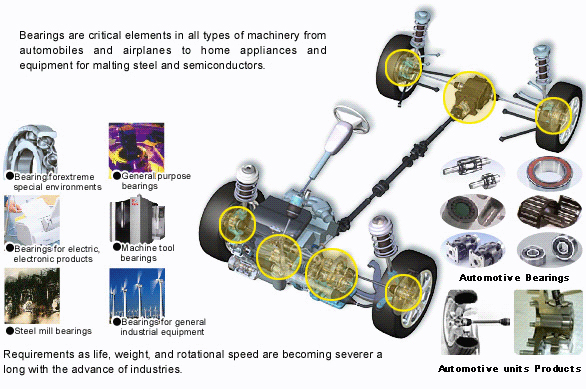Choosing a Thrust Roller Bearing Application
When choosing a thrust roller bearing for your application, you need to take into account a few important aspects. These factors will affect the material and size that you select, as well as the type of environment that the bearing is used in. Also, you should consider the axial load, as well as the dynamic and static load.
axial loads
To keep the performance of your machinery at a high level, you need to avoid over-stressing your thrust roller bearings. As with any other bearing, thrust bearings can suffer from damage if the combined load exceeds the maximum load capacity. Fortunately, there are many ways to minimize the damage to your bearings.
The first step in protecting your bearings is understanding how axial loads work. Thrust roller bearings are often subject to axial loads, which are forces acting on the angular position of a shaft. When axial loads are applied, a moment force acts on the inner race and changes the distribution of loads on the bearing's rolling elements. This force is known as the preload, and it is separate from the application loads. It helps ensure optimum synergy between the bearing's rolling elements and its races.

Material choices
The choice of material for a thrust roller bearing application is usually based on performance requirements. A nylon ball retainer offers cost savings, durability, and strength. It is often used in point of purchase displays, marine hardware, and advertising signage. The nylon retainer features hardened steel balls and is designed to reduce friction and noise. Micro finish thrust washers are also available to increase durability and reduce noise.
The friction coefficient of a material is dependent on the velocity and pressure it experiences. For example, a dimpled surface would provide better frictional performance than a smooth surface would. Further, it would also extend the hydrodynamic lubrication regime. This would suggest a higher film thickness, which would be good for the bearing. This theory is confirmed by experiments conducted on thrust bearings.
Dynamic and static load
The dynamic and static load on a thrust roller bearing application must be carefully matched for proper performance. While permanent thrust load eliminates play and ensures a more accurate rotation, excessive thrust load may result in catastrophic failure. Because of this, it is important for engineers to match the static and dynamic load of the bearing to the application's requirements.
Dynamic load means the total mechanical burden the bearing must bear during operation, while the static load represents the load the bearing will bear when at rest. When calculating the static and dynamic load, the bearing specifications should take into account the application's expected lifetime. If both of these factors are considered, the bearing lifespan can be accurately calculated.
Application
The thrust roller bearings used in various industrial applications are highly durable and provide better shock resistance compared to ball bearings. However, they generate higher heat, which makes them suitable only for constant loads. Offset and sectional thrust roller bearings are the most suitable options for these purposes. However, the latter does not have self-centering capabilities.
Thrust roller bearings are available in various designs, including needle, cylindrical and tapered types. Their cylindrical and spherical versions are designed with a tapered surface, which matches the rollers' raceways. The tapered surfaces of these bearings help them accommodate combined dynamic loads. Spherical roller thrust bearings also have self-aligning properties, which makes them suitable for applications with a severe misalignment of the bearing's bearing shaft and housing bore.











